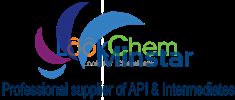- 0086-21-56469616
- 0086-18019205509
- minstar@minstargroup.com
- Language:English
- English
Your Location:Home >Products >Plant Extract >9001-73-4


Appearance:cream to light brown powder
Throughput:2|Metric Ton|Month
pd_productuse:Papain may cause allergic manifestation .Person handling this material should be protected against inhalation of dust and contact with the skin or eyes.
Delivery Time:in stock
Purity:500000U
【Synonyms】
Adolph's Meat Tenderizer
Papayaze
【CAS】
9001-73-4
【EINECS】
232-627-2
【RTECS】
RU4950000
【RTECS Class】
Drug; Reproductive Effector; Human Data; Natural Product
【Beilstein/Gmelin】
NA
【EC Index Number】
647-007-00-0
【EC Class】
Irritant; Sensitising
Physical and Chemical Properties Back to Contents
【Appearance】
Cream colored powder.
【Usage】
For tenderizing meats.
First Aid Measures Back to Contents
【Ingestion】
If victim is conscious and alert, give 2-4 cupfuls of milk or water. Never give anything by mouth to an unconscious person. Get medical aid.
【Inhalation】
Remove from exposure to fresh air immediately. If not breathing, give artificial respiration. If breathing is difficult, give oxygen. Get medical aid.
【Skin】
Get medical aid if irritation develops or persists. Flush skin with plenty of soap and water.
【Eyes】
Flush eyes with plenty of water for at least 15 minutes, occasionally lifting the upper and lower eyelids. Get medical aid.
Handling and Storage Back to Contents
【Storage】
Store in a cool, dry place. Keep from contact with oxidizing materials.
【Handling】
Wash thoroughly after handling. Remove contaminated clothing and wash before reuse. Minimize dust generation and accumulation. Avoid contact with skin and eyes. Avoid ingestion and inhalation.
Hazards Identification Back to Contents
【Inhalation】
Causes respiratory tract irritation. May cause allergic respiratory reaction.
【Skin】
Causes skin irritation. May cause skin sensitization, an allergic reaction, which becomes evident upon re-exposure to this material.
【Eyes】
Causes eye irritation.
【Ingestion】
May cause irritation of the digestive tract.
【Hazards】
During a fire, irritating and highly toxic gases may be generated by thermal decomposition or combustion.
Exposure Controls/Personal Protection Back to Contents
【Personal Protection】
Eyes: Wear appropriate protective eyeglasses or chemical safety goggles as described by OSHA's eye and face protection regulations in 29 CFR 1910.133 or European Standard EN166. Skin: Wear appropriate protective gloves to prevent skin exposure. Clothing: Wear appropriate protective clothing to minimize contact with skin.
【Respirators】
A respiratory protection program that meets OSHA's 29 CFR 1910.134 and ANSI Z88.2 requirements or European Standard EN 149 must be followed whenever workplace conditions warrant a respirator's use.
【Exposure Effects】
The toxological properties of this substance have not been fully investigated.
Fire Fighting Measures Back to Contents
【Fire Fighting】
Wear a self-contained breathing apparatus in pressure-demand, MSHA/NIOSH (approved or equivalent), and full protective gear. During a fire, irritating and highly toxic gases may be generated by thermal decomposition or combustion. Runoff from fire control or dilution water may cause pollution. To extinguish fire, use water, dry chemical, chemical foam, or alcohol-resistant foam. Use agent most appropriate to extinguish fire.
Accidental Release Measures Back to Contents
【Small spills/leaks】
Vacuum or sweep up material and place into a suitable disposal container. Wash area with soap and water. Avoid generating dusty conditions. Provide ventilation.
Stability and Reactivity Back to Contents
【Stability】
Stable at room temperature in closed containers under normal storage and handling conditions.
【Incompatibilities】
Strong oxidizers.
【Decomposition】
Carbon monoxide in cases of incomplete combustion, carbon dioxide.
CAS:15492-45-2
CAS:4075-81-4
CAS:1501-84-4
CAS:5464-78-8